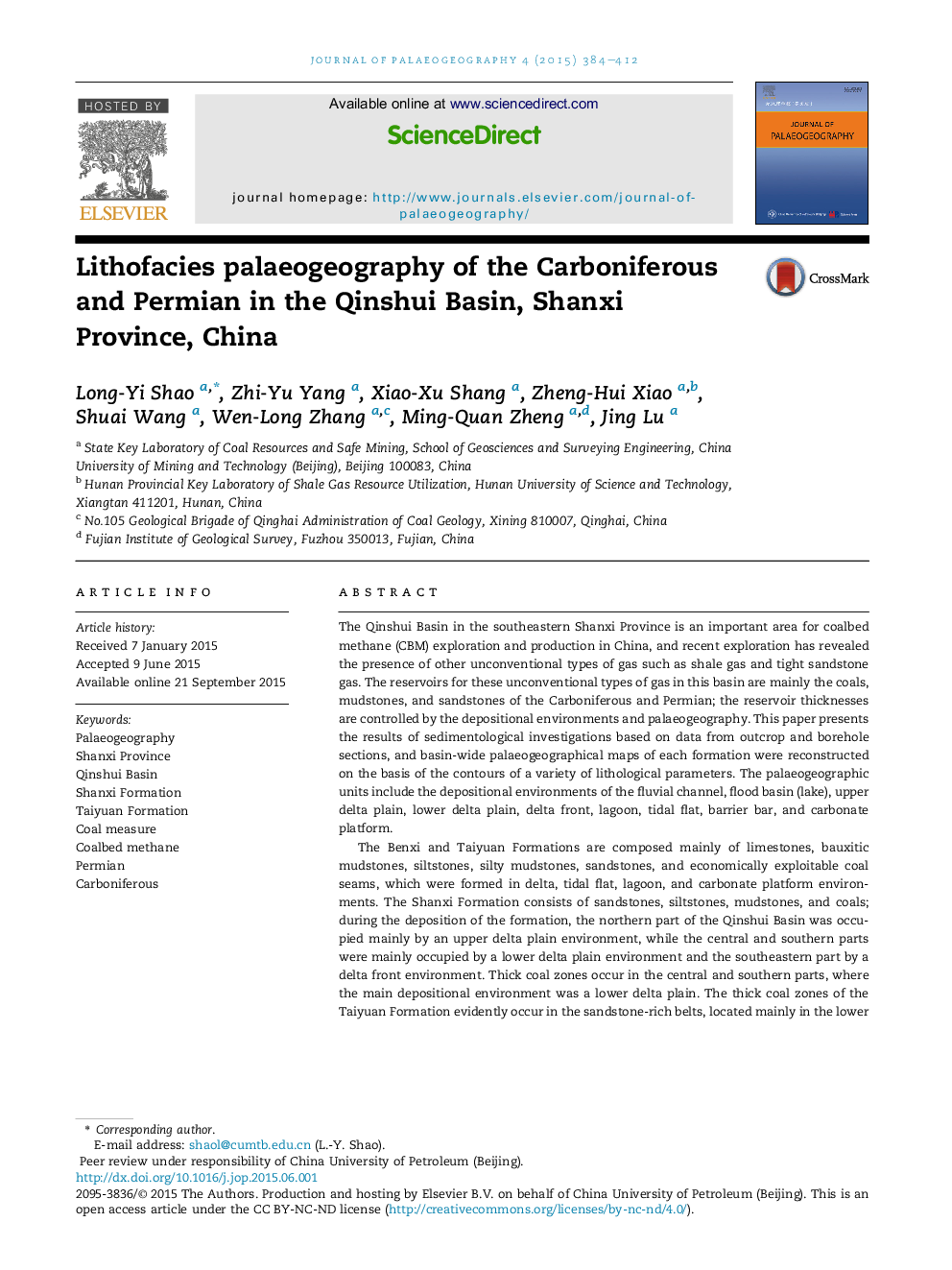| کد مقاله | کد نشریه | سال انتشار | مقاله انگلیسی | نسخه تمام متن |
|---|---|---|---|---|
| 4580964 | 1333668 | 2015 | 29 صفحه PDF | دانلود رایگان |

The Qinshui Basin in the southeastern Shanxi Province is an important area for coalbed methane (CBM) exploration and production in China, and recent exploration has revealed the presence of other unconventional types of gases such as shale gas and tight sandstone gas. The reservoirs for these unconventional types of gas in this basin are mainly the coals, mudstones, and sandstones of the Carboniferous and Permian; the reservoir thicknesses are controlled by the depositional environments and palaeogeography. This paper presents the results of sedimentological investigations based on data from outcrop and borehole sections, and basin-wide palaeogeographical maps of each formation were reconstructed on the basis of the contours of a variety of lithological parameters. The palaeogeographic units include the depositional environments of the fluvial channel, flood basin (lake), upper delta plain, lower delta plain, delta front, lagoon, tidal flat, barrier bar, and carbonate platform.The Benxi and Taiyuan Formations are composed mainly of limestones, bauxitic mudstones, siltstones, silty mudstones, sandstones, and economically exploitable coal seams, which were formed in delta, tidal flat, lagoon, and carbonate platform environments. The Shanxi Formation consists of sandstones, siltstones, mudstones, and coals; during the deposition of the formation, the northern part of the Qinshui Basin was occupied mainly by an upper delta plain environment, while the central and southern parts were mainly occupied by a lower delta plain environment and the southeastern part by a delta front environment. Thick coal zones occur in the central and southern parts, where the main depositional environment was a lower delta plain. The thick coal zones of the Taiyuan Formation evidently occur in the sandstone-rich belts, located mainly in the lower delta plain environment in the northern part of the basin and the barrier bar environments in the southeastern part of the basin. In contrast, the thick coal zones of the Shanxi Formation extend over the mudstone-rich belts, located in the areas of the lower delta plain environments of the central and southern parts of the Basin.The Xiashihezi, Shangshihezi, and Shiqianfeng Formations consist mainly of red mudstones with thick-interbedded sandstones. During the deposition of these formations, most areas of the basin were occupied by a fluvial channel, resulting in palaeogeographic units that include fluvial channel zones and flood basins. The fluvial channel deposits consist mainly of relatively-thick sandstones, which could have potential for exploration of tight sandstone gas.
Journal: Journal of Palaeogeography - Volume 4, Issue 4, October 2015, Pages 384–412